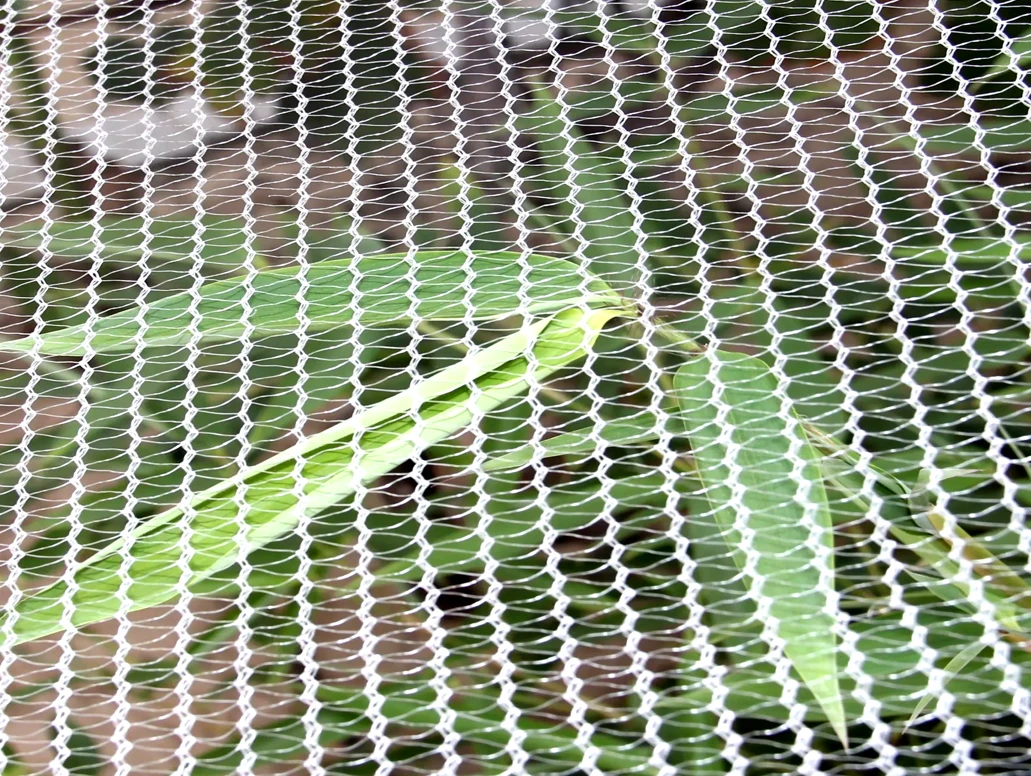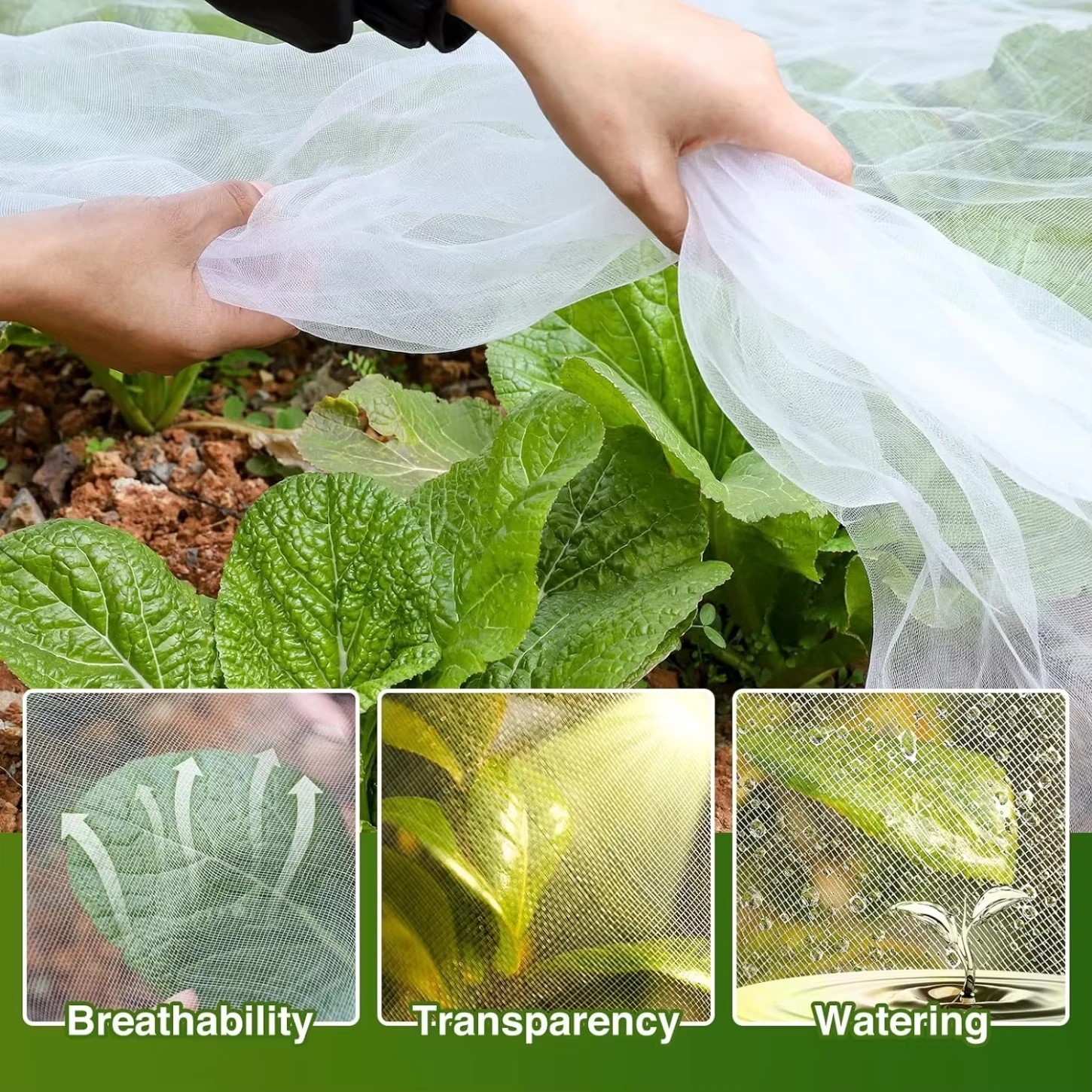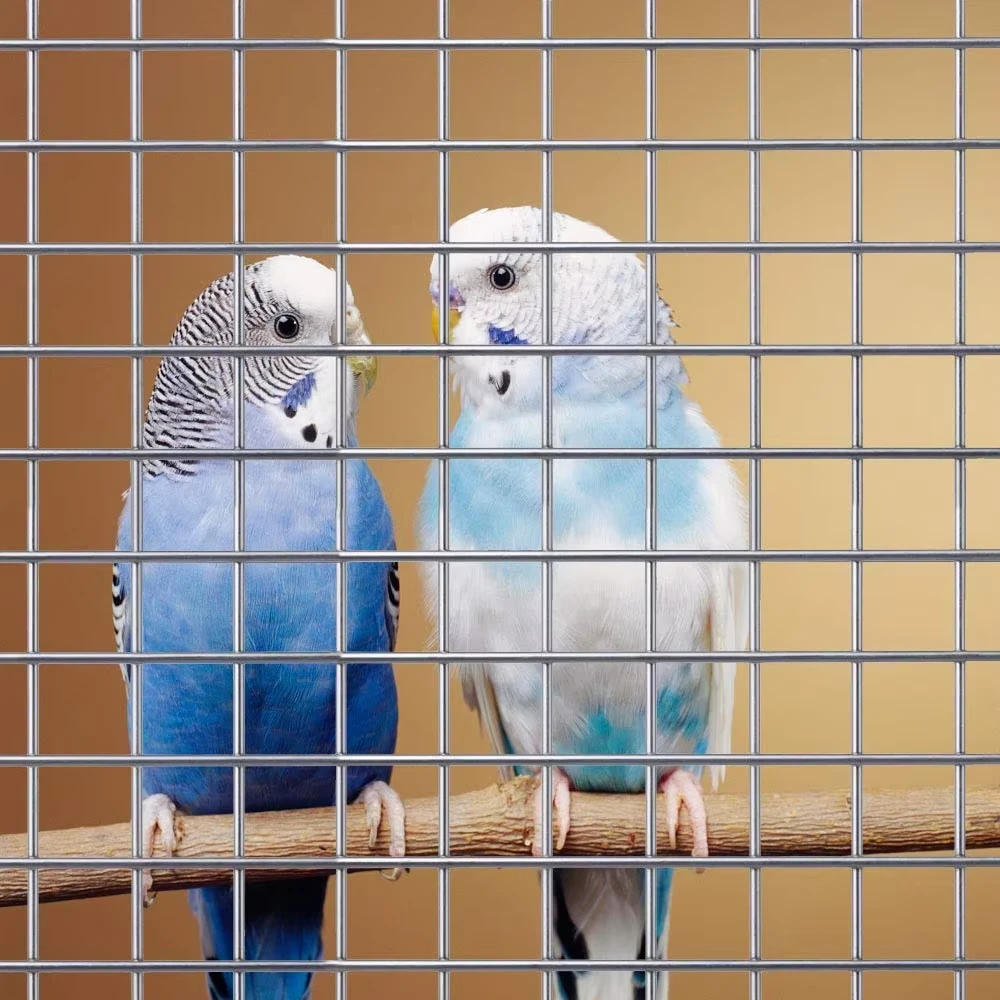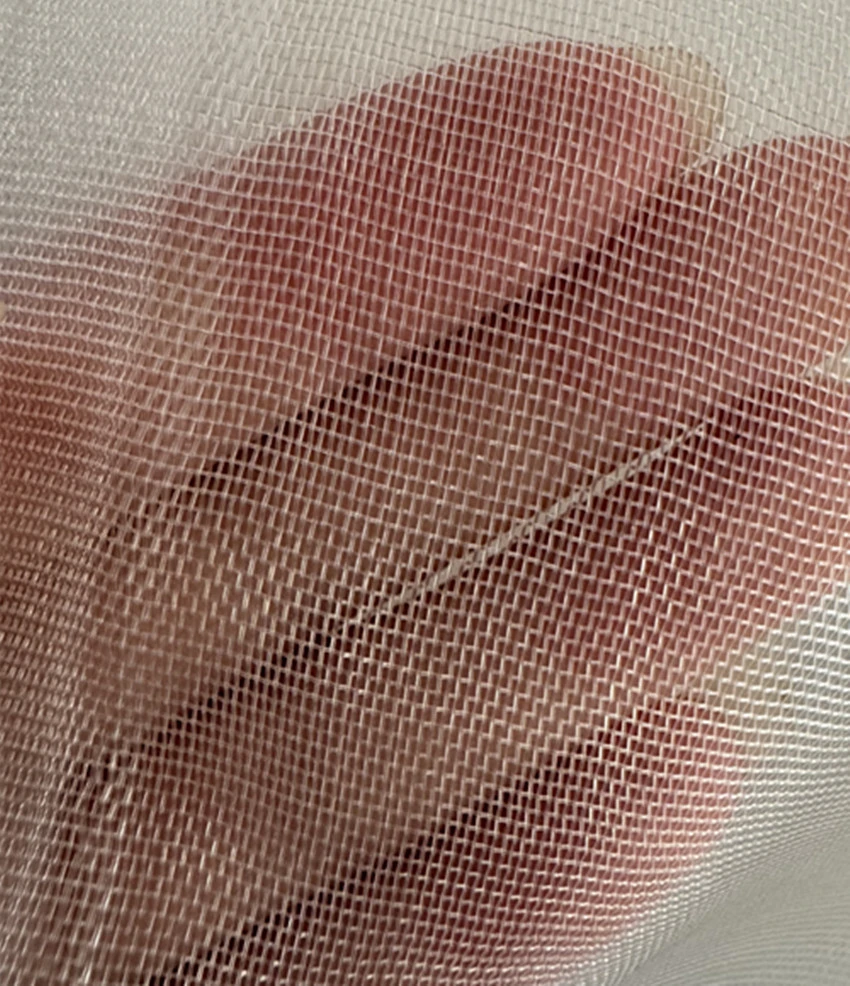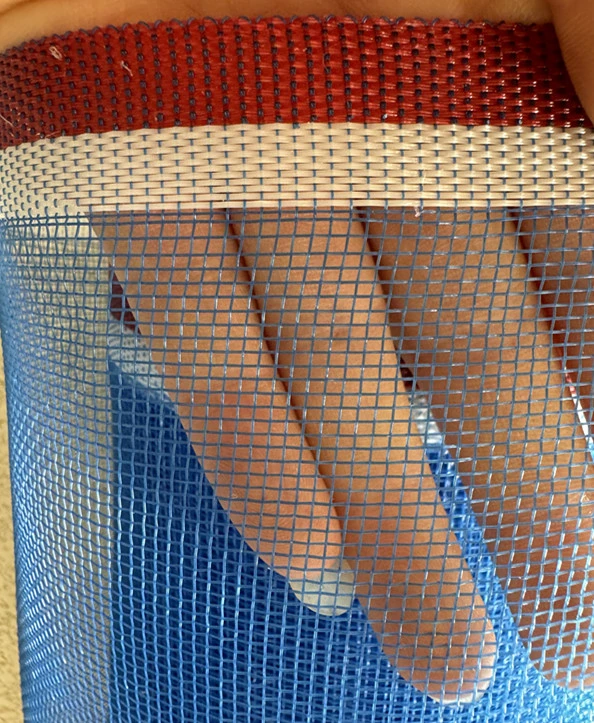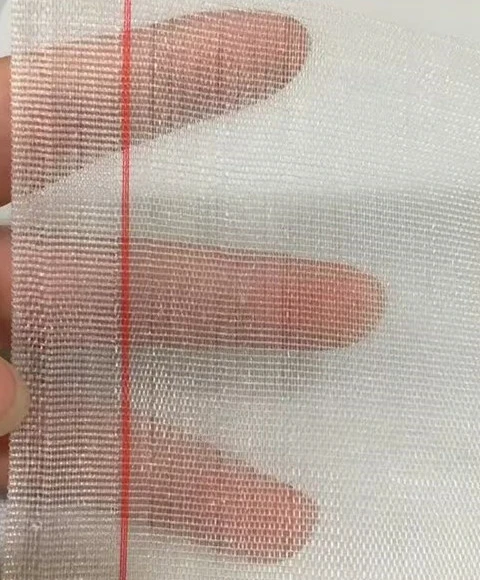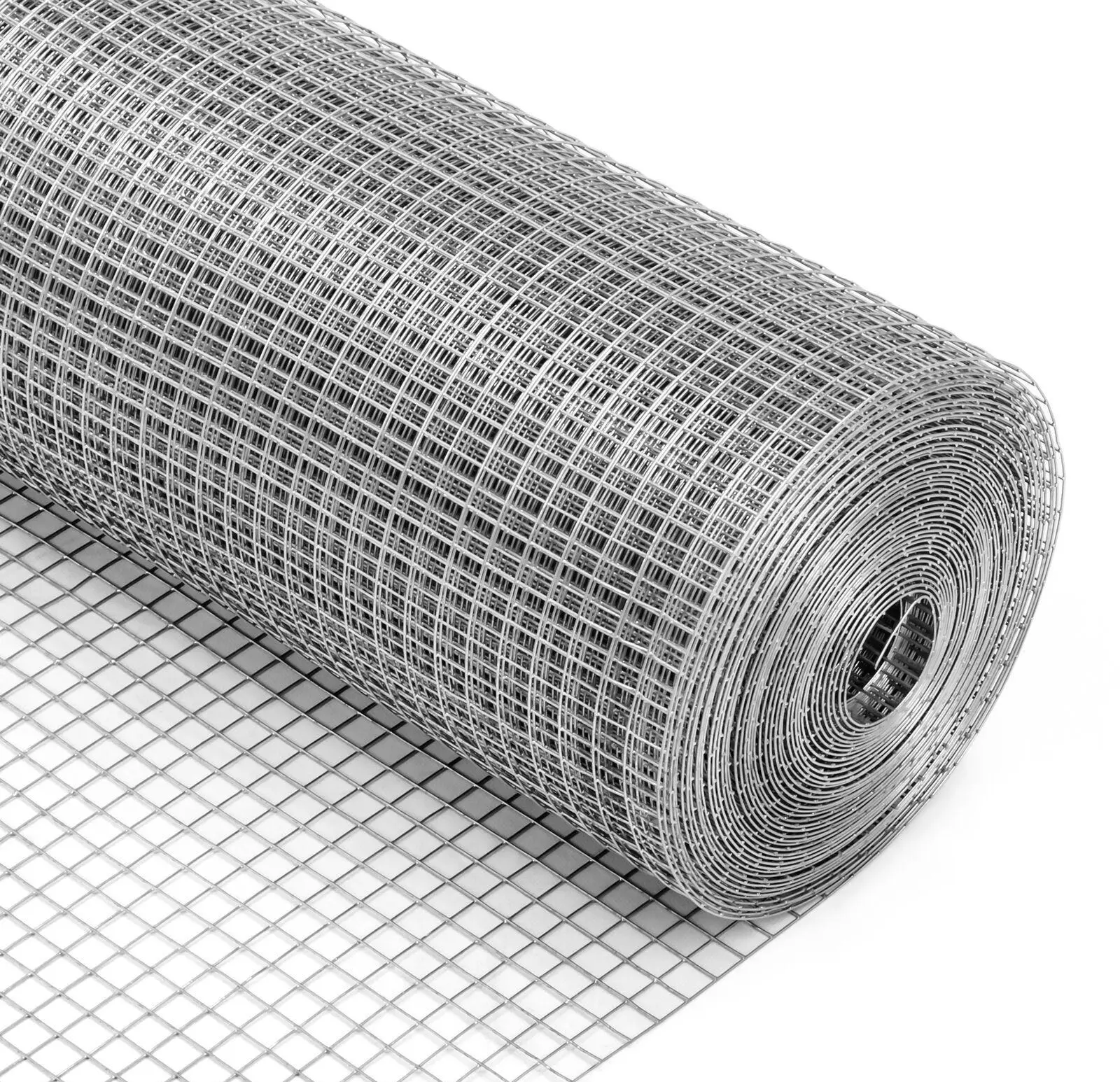60-Mesh Insect Net: Optimal Pest Control for Greenhouse Vegetables
Industry Trends in Advanced Greenhouse Pest Management
The agricultural sector is undergoing a significant transformation, driven by demands for sustainable practices, increased crop yields, and reduced reliance on chemical pesticides. Greenhouse cultivation, in particular, is expanding rapidly, offering controlled environments for optimal plant growth. However, this enclosed setting also presents unique challenges for pest management. Traditional methods, including broad-spectrum pesticides, face increasing scrutiny due to environmental concerns, rising regulatory pressures, and the development of pest resistance. This paradigm shift has accelerated the adoption of Integrated Pest Management (IPM) strategies, with physical exclusion emerging as a cornerstone.
One of the most critical components of modern IPM in greenhouses is the strategic deployment of insect netting. Innovations in polymer science and weaving technology have led to specialized nets designed for specific pest sizes and environmental conditions. Among these, the 60-Mesh Insect Net: Optimal for Controlling Medium-Sized Pests in Greenhouse Vegetables represents a significant advancement. This specific mesh size targets a crucial range of agricultural pests, providing a physical barrier without compromising essential airflow or light transmission, thereby fostering a healthier and more productive growing environment. The market trend indicates a clear move towards precision pest control solutions, reducing input costs and enhancing the safety and quality of produce.
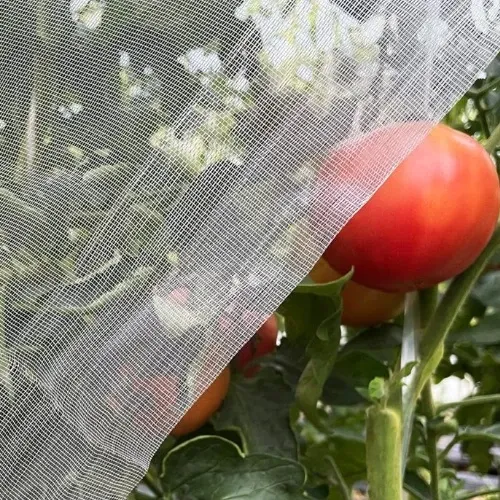
The drive for organic certification and consumer preference for pesticide-free produce further amplifies the demand for effective physical exclusion technologies. Greenhouses equipped with high-quality insect nets report significantly lower incidences of pest infestations, leading to reduced crop damage, fewer harvest rejections, and ultimately, higher profitability. This shift is not merely about pest control; it's about establishing a resilient and sustainable agricultural future.
Manufacturing Process: Precision Engineering for Pest Exclusion
The production of a high-performance 60-Mesh Insect Net: Optimal for Controlling Medium-Sized Pests in Greenhouse Vegetables involves a meticulous process designed to ensure durability, optimal mesh integrity, and consistent performance over an extended service life. The focus is on creating a robust physical barrier that withstands environmental stressors while maintaining essential horticultural conditions.
Materials and Extrusion
The foundational material for our insect nets is premium-grade High-Density Polyethylene (HDPE) monofilament. HDPE is selected for its exceptional tensile strength, resistance to chemical degradation, and inertness. Crucially, UV stabilizers are co-extruded with the HDPE polymer. This critical step ensures the net's resistance to photodegradation from intense solar radiation, significantly extending its service life in harsh greenhouse environments. The monofilament extrusion process is tightly controlled, ensuring uniform diameter and consistent material properties, which are paramount for creating a precise mesh structure.
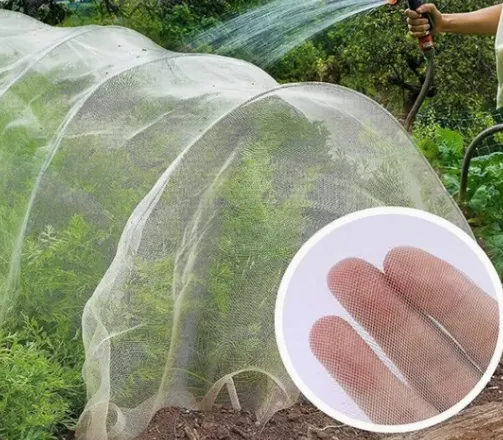
Weaving and Knitting
Following extrusion, the HDPE monofilaments are precisely woven or knitted into the desired 60-mesh configuration. For insect nets, a knitted structure is often preferred due to its inherent resistance to unraveling and tearing, even if punctured. Advanced weaving looms are calibrated to achieve an exact mesh opening of approximately 0.25mm to 0.30mm, ensuring effective exclusion of targeted medium-sized pests such as whiteflies, thrips, and aphids, while optimizing airflow and light transmission. This precision is critical for the net's effectiveness and its ability to maintain a favorable microclimate within the greenhouse.
Heat Setting and Quality Control
After weaving, the net undergoes a heat-setting process. This thermal treatment stabilizes the fabric, preventing shrinkage or stretching and locking the mesh structure in place. It enhances the net's dimensional stability and reduces material stress, which contributes to its long-term performance.
Rigorous Quality Control (QC) is integrated at every stage. This includes:
- Material Purity Tests: Ensuring HDPE composition and UV additive levels meet specifications.
- Mesh Opening and Density Verification: Using optical measurement tools to confirm the 60-mesh standard, complying with internal and industry standards like ASTM E2016 for woven wire mesh (adapted for polymers).
- Tensile Strength and Tear Resistance: Testing samples according to ISO 13934-1 (tensile properties) and ISO 13937-2 (tear properties) to guarantee mechanical durability.
- UV Stability Accelerated Weathering: Simulating prolonged outdoor exposure using methods derived from ISO 4892-2 to predict real-world service life.
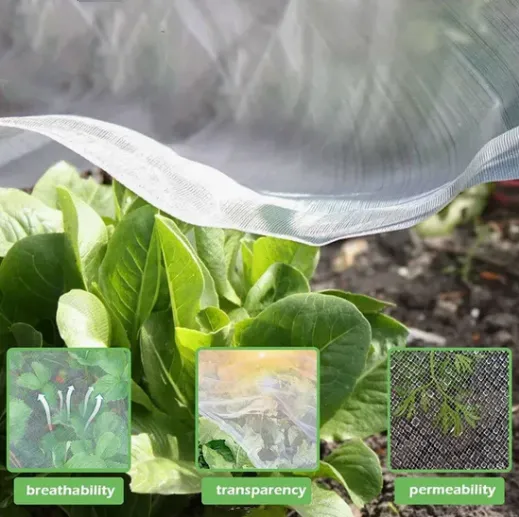
Finishing and Packaging
After QC, the nets are cut to precise dimensions, often with reinforced selvages for ease of installation and enhanced durability. They are then carefully rolled and packaged to prevent damage during transit and storage. The target industries for this product primarily include large-scale commercial greenhouses, horticultural nurseries, and specialized vegetable and flower cultivation facilities that require robust pest management solutions. The typical service life of our 60-Mesh Insect Net: Optimal for Controlling Medium-Sized Pests in Greenhouse Vegetables, when properly installed and maintained, ranges from 3 to 5 years, often extending beyond depending on regional UV intensity and climate.
Technical Specifications and Performance Parameters
The effectiveness of a 60-Mesh Insect Net: Optimal for Controlling Medium-Sized Pests in Greenhouse Vegetables hinges on its precise technical specifications. These parameters dictate its ability to exclude pests, maintain optimal environmental conditions, and endure the rigors of agricultural applications. Below is a detailed table outlining key specifications.
| Parameter | Specification | Standard / Test Method | Benefit to User |
|---|---|---|---|
| Mesh Count | 60 threads per inch (warp & weft) | Industry Standard (Nominal) | Optimal exclusion of whiteflies, aphids, thrips, leafminers. |
| Mesh Opening (Approx.) | 0.25 mm - 0.30 mm | Optical Microscopy / ASTM E2016 | Precise barrier against target pests, minimal ventilation impedance. |
| Material | 100% Virgin HDPE (High-Density Polyethylene) | Material Data Sheet / Spectrometry | High strength, chemical resistance, non-toxic. |
| UV Stabilization | Integrated UV Inhibitors (min. 3-5%) | ISO 4892-2 (Accelerated Weathering) | Extended service life (3-5+ years) in high UV environments. |
| Weight | ~100-120 g/m² (grams per square meter) | ISO 3801 / Gravimetric Analysis | Lightweight for easy installation, strong for durability. |
| Tensile Strength (Warp/Weft) | >300 N / 5cm | ISO 13934-1 | Resistance to tearing and stretching under tension. |
| Shade Factor | Approx. 15-20% | Photometric Measurement | Minimal light reduction, ideal for full sun crops, slight cooling effect. |
| Air Permeability | >800 L/m²/s at 100 Pa (approx.) | ISO 9237 | Excellent ventilation, reduces heat buildup, crucial for plant respiration. |
These specifications are rigorously tested to ensure that the 60-Mesh Insect Net: Optimal for Controlling Medium-Sized Pests in Greenhouse Vegetables delivers consistent, high-level performance, providing growers with a reliable solution for pest exclusion while maintaining optimal growing conditions.
Application Scenarios and Technical Advantages
The strategic deployment of a 60-Mesh Insect Net: Optimal for Controlling Medium-Sized Pests in Greenhouse Vegetables offers multifaceted advantages across various greenhouse cultivation environments. Its primary function as a physical barrier is complemented by its contribution to a healthier, more sustainable growing ecosystem.
Typical Application Scenarios:
- Ventilation Openings: Covering greenhouse vents, side walls, and roof openings to prevent insect entry while allowing for natural ventilation. This is crucial for temperature regulation and humidity control.
- Tunnel Greenhouses: Creating insect-proof tunnels over high-value crops, protecting them from flying insects and vectors of plant diseases.
- Seedling Nurseries: Protecting young, vulnerable seedlings from early-stage pest infestations that can devastate an entire crop.
- Propagation Areas: Ensuring pest-free zones for plant propagation, where cleanliness and sterile environments are paramount.
- Organic Production: An indispensable tool for organic growers seeking to minimize or eliminate pesticide use, aligning with organic certification standards.

Technical Advantages:
- Superior Pest Exclusion: The precise 0.25-0.30mm mesh opening is specifically engineered to block common medium-sized greenhouse pests such as whiteflies (e.g., Bemisia tabaci, typically 0.8-1.0mm long, but young instars and eggs are much smaller, and the net prevents adults from laying), aphids (1-4mm), and thrips (0.5-1.5mm), which are notorious for transmitting plant viruses.
- Optimized Ventilation and Airflow: Despite its fine mesh, the HDPE monofilament structure and knitting pattern ensure excellent air permeability. This is crucial for regulating greenhouse temperatures, reducing humidity levels, and facilitating CO2 exchange, all of which contribute to robust plant growth and mitigate fungal diseases.
- Maximized Light Transmission: With a shade factor of only 15-20%, the net allows ample sunlight to penetrate, crucial for photosynthesis and crop development, avoiding the light-starvation issues associated with denser shading materials.
- Chemical-Free Pest Control: By providing a physical barrier, the net drastically reduces the need for chemical pesticides, aligning with sustainable agriculture practices and leading to safer, residue-free produce. This also protects beneficial insects within the greenhouse ecosystem.
- Enhanced Crop Yield and Quality: Reduced pest pressure directly translates to less crop damage, healthier plants, and significantly higher marketable yields. Studies show that integrated netting can lead to yield increases by preventing viral diseases spread by insect vectors.
- Durability and Longevity: The use of UV-stabilized virgin HDPE ensures resistance to degradation from sunlight, chemicals, and physical wear, providing a service life of 3-5 years or more, offering an excellent return on investment.
- Cost-Effectiveness: While an initial investment, the long-term savings from reduced pesticide use, lower labor costs for pest scouting and application, and increased crop value make this net a highly cost-effective pest management solution.
In summary, the technical advantages of our 60-Mesh Insect Net: Optimal for Controlling Medium-Sized Pests in Greenhouse Vegetables extend beyond simple pest exclusion, contributing to energy saving through reduced need for forced ventilation (by optimizing natural airflow), fostering a naturally corrosive-resistant environment due to non-reactive HDPE, and overall enhancing the sustainability and profitability of greenhouse operations.
Vendor Comparison: Choosing the Right Solution
When selecting a 60-Mesh Insect Net: Optimal for Controlling Medium-Sized Pests in Greenhouse Vegetables, discerning buyers in the B2B sector must evaluate vendors based on more than just initial price. Critical factors include material quality, manufacturing consistency, adherence to international standards, customization capabilities, and post-sales support. Here's a comparison to highlight key differentiators.
| Feature/Criterion | Our Product (YJ Wire Mesh) | Competitor A (Budget Option) | Competitor B (Premium Branded) |
|---|---|---|---|
| Material Quality | 100% Virgin HDPE with integrated UV stabilizers (3-5%) | Recycled/Mixed HDPE, minimal or inconsistent UV additives | 100% Virgin HDPE with integrated UV stabilizers (5-7%) |
| Mesh Consistency | Tight tolerance (±0.05mm), precise 60-mesh opening (0.25-0.30mm) | Variable mesh opening, higher tolerance (±0.15mm), risk of pest entry | Tight tolerance (±0.03mm), precise 60-mesh opening (0.25mm) |
| UV Resistance (Service Life) | Guaranteed 3-5 years (ISO 4892-2 tested) | 1-2 years (prone to early degradation) | Guaranteed 5-7 years (ISO 4892-2 tested) |
| Air Permeability (ISO 9237) | Excellent (>800 L/m²/s) | Moderate (600-700 L/m²/s), potential for heat build-up | Superior (>900 L/m²/s) |
| Tensile Strength (ISO 13934-1) | High (>300 N/5cm) | Low ( | Very High (>400 N/5cm) |
| Certification/Compliance | ISO 9001 (Mfg.), Material TDS, Test Reports | Limited or no verifiable certifications | ISO 9001, ISO 14001, extensive third-party testing |
| Customization | Custom widths/lengths, reinforced edges, specialized colors | Standard sizes only | Extensive customization, including bespoke weaves/mesh. |
| Price Point | Mid-range, excellent value for performance | Low, high risk of premature failure and replacement costs | High, reflecting superior materials and brand premium |
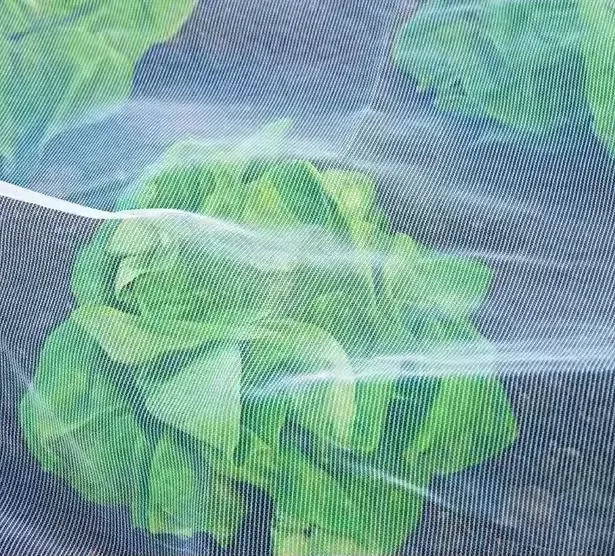
Our offering strikes an optimal balance between performance, durability, and cost-efficiency. While budget options may seem appealing initially, their short service life and inconsistent performance often lead to higher total cost of ownership. Premium brands offer top-tier performance but at a significant price premium. Our 60-Mesh Insect Net: Optimal for Controlling Medium-Sized Pests in Greenhouse Vegetables is engineered to deliver reliable, long-term pest exclusion and environmental control without unnecessary expense, making it an ideal choice for commercial growers seeking proven efficacy and value.
Customized Solutions and Application Case Studies
Recognizing that no two greenhouse operations are identical, we offer comprehensive customized solutions for our 60-Mesh Insect Net: Optimal for Controlling Medium-Sized Pests in Greenhouse Vegetables. Our expertise allows us to tailor product specifications to meet unique project requirements, ensuring maximum effectiveness and integration.
Customization Capabilities:
- Dimensioning: Production in custom widths and lengths to minimize waste and facilitate seamless installation on diverse greenhouse structures, from small tunnels to expansive multi-span facilities.
- Edge Reinforcement: Option for reinforced selvages or sewn hems, enhancing tear resistance and providing robust attachment points for clips, wires, or framing systems.
- Color Options: While clear/white is standard for maximum light, specialized colors may be available for specific aesthetic or thermal requirements.
- Roll Packaging: Custom roll sizes and packaging to accommodate specific shipping, handling, and installation logistics for large-scale projects.
- Integrated Solutions: Consultation and design support to integrate the netting with existing greenhouse ventilation systems, roll-up sides, or automated mechanisms.
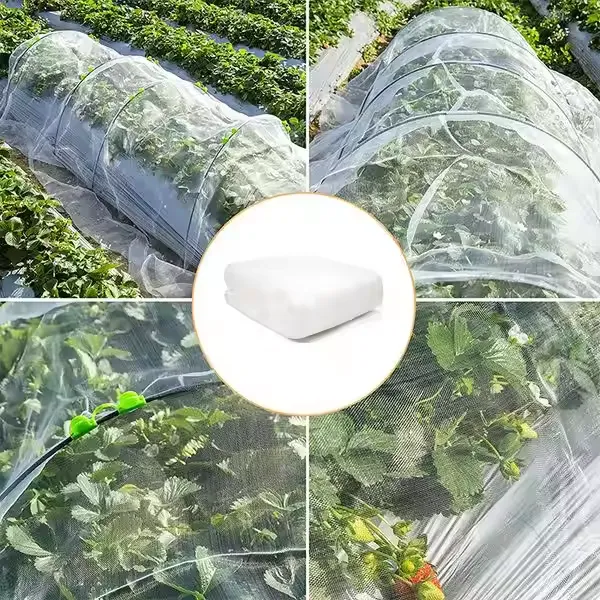
Application Case Studies:
Case Study 1: Large-Scale Tomato Production Facility, California, USA
A leading commercial tomato grower operating a 5-acre hydroponic greenhouse facility faced persistent challenges with whitefly and thrips infestations, leading to significant yield losses and increased pesticide costs. After implementing our 60-Mesh Insect Net: Optimal for Controlling Medium-Sized Pests in Greenhouse Vegetables across all ventilation openings, the facility reported a 90% reduction in whitefly populations within the first growing cycle and a complete eradication of thrips-transmitted Tospoviruses. Customer feedback highlighted the net's exceptional durability under intense California sun and its minimal impact on internal greenhouse temperatures and humidity, leading to optimal plant health and a 15% increase in marketable tomato yield. The project demonstrated advantages in energy saving (reduced fan reliance) and enhanced resistance to environmental degradation.

Case Study 2: Organic Bell Pepper Farm, Netherlands
An organic bell pepper farm in the Netherlands sought to further reduce its reliance on biological pest control agents by implementing a robust physical barrier. Our customized 60-mesh netting was installed on all greenhouse perimeters and roof vents. Over two consecutive growing seasons, the farm observed a remarkable decrease in aphid and leafminer damage, maintaining stringent organic certification requirements without the need for additional chemical interventions. The farm manager praised the net's consistent mesh integrity and ease of cleaning, noting that "the investment paid for itself within a year through reduced labor and increased first-grade produce." This success underscores the net's corrosion resistance in humid greenhouse environments and its robust construction for long-term service.
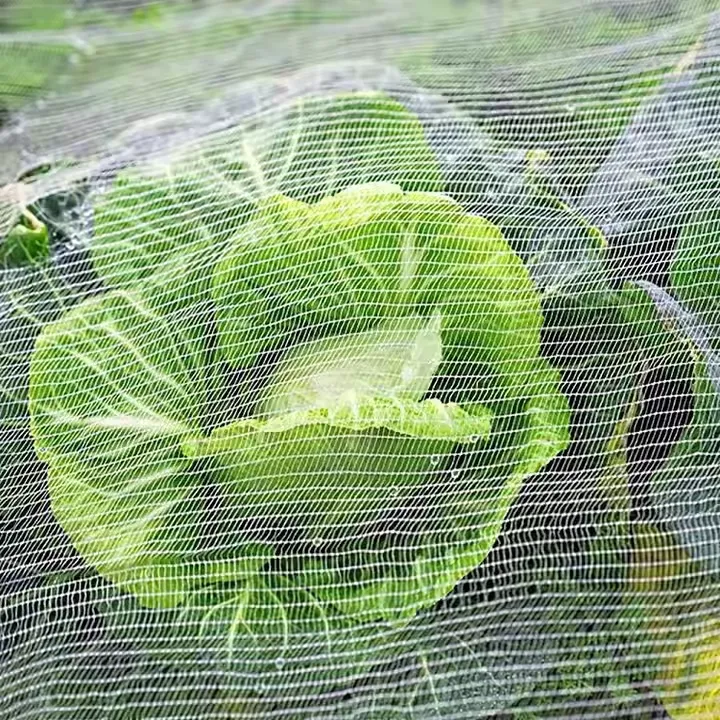
Case Study 3: High-Value Herb Nursery, Australia
A high-value herb nursery in a tropical region of Australia, specializing in rare medicinal herbs, needed absolute protection from fruit flies and microscopic pest vectors. After a detailed consultation, we supplied custom-sized rolls of our 60-Mesh Insect Net: Optimal for Controlling Medium-Sized Pests in Greenhouse Vegetables, ensuring full enclosure of their propagation houses. The nursery reported zero fruit fly incidence and a significant reduction in fungal spore entry, attributed to the net's fine mesh and high airflow characteristics. The ability to maintain precise climate control without pest intrusion proved vital for their sensitive crop, underscoring the product's adaptability and consistent performance even in challenging climates.
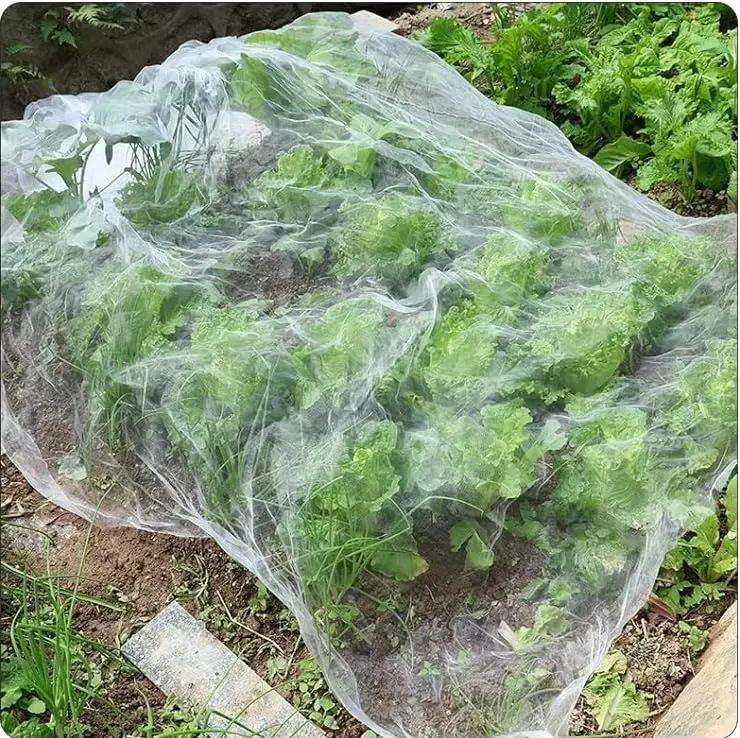
Commitment to Trust: FAQ, Lead Time, Warranty, and Support
At YJ Wire Mesh, we understand that trust is paramount in B2B partnerships. Our commitment extends beyond providing high-quality products like the 60-Mesh Insect Net: Optimal for Controlling Medium-Sized Pests in Greenhouse Vegetables; we ensure comprehensive support throughout the entire customer journey.
Frequently Asked Questions (FAQ)
Q1: What pests does the 60-mesh net effectively control?
A1: The 60-mesh net is highly effective against a range of medium-sized greenhouse pests, including whiteflies, thrips, aphids, and leafminers, which are notorious for crop damage and disease transmission.
Q2: How does the net impact light transmission and ventilation?
A2: Our 60-mesh net offers excellent light transmission (approx. 80-85% visibility) and high air permeability, ensuring minimal disruption to photosynthesis and crucial airflow for temperature and humidity regulation within the greenhouse.
Q3: What is the expected service life of the insect net?
A3: With proper installation and maintenance, and thanks to integrated UV stabilizers, our 60-mesh insect net has an expected service life of 3 to 5 years, often longer depending on environmental conditions.
Q4: Can this net be customized for specific greenhouse dimensions?
A4: Yes, we offer extensive customization options, including specific widths, lengths, and edge reinforcements to perfectly match your greenhouse structure and installation requirements.
Lead Time and Fulfillment
We maintain efficient production lines and robust inventory management to ensure timely delivery. Standard orders for our 60-Mesh Insect Net: Optimal for Controlling Medium-Sized Pests in Greenhouse Vegetables typically have a lead time of 7-14 business days from order confirmation to dispatch. For large volume or highly customized orders, lead times will be provided with the quotation, factoring in specific material sourcing and production schedules. We partner with reliable logistics providers to ensure secure and on-time global delivery.
Warranty Commitments
YJ Wire Mesh stands behind the quality of our products. Our 60-mesh insect net comes with a 3-year limited warranty against manufacturing defects and premature UV degradation under normal operating conditions. This warranty reflects our confidence in the material quality, manufacturing precision (ISO 9001 certified processes), and rigorous testing standards applied to every roll. Detailed warranty terms and conditions are available upon request.
Customer Support and After-Sales Service
Our dedicated customer support team is available to assist you from initial inquiry through product installation and beyond. We provide technical guidance, installation best practices, and troubleshooting support. Our commitment to your success is unwavering, as evidenced by our strong relationships with partner clients worldwide and years of service in the agricultural sector. For inquiries, please contact us via email at sales@yjwiremesh.com or call our technical support line during business hours.
Conclusion and Authoritative References
The adoption of the 60-Mesh Insect Net: Optimal for Controlling Medium-Sized Pests in Greenhouse Vegetables represents a strategic investment for modern greenhouse operations. By offering a robust, chemical-free, and highly effective barrier against medium-sized pests, this specialized netting contributes significantly to enhanced crop protection, improved yields, and the long-term sustainability of agricultural practices. Its precision engineering, coupled with superior material properties, ensures optimal light transmission and airflow, creating an ideal microclimate for healthy plant development. As the agricultural industry continues its pivot towards ecological responsibility and efficiency, such advanced exclusion technologies will remain indispensable tools for growers committed to producing high-quality, pesticide-free produce.
Our dedication to quality, customization, and comprehensive customer support positions us as a trusted partner for B2B clients seeking reliable and innovative pest management solutions for their greenhouse environments.
References:
- Bethke, J. A., & Paine, T. D. (2018). Insect Screens for Exclusion of Pests from Greenhouses. University of California Agriculture and Natural Resources, Publication 8585.
- Shukla, R., & Kumar, R. (2019). Efficacy of Different Mesh Size Insect-Proof Nets against Whitefly (Bemisia tabaci Gennadius) in Protected Cultivation. Journal of Entomology and Zoology Studies, 7(3), 392-395.
- Saha, P. K., & Gill, J. S. (2017). Greenhouse Pest Management: A Review of Integrated Pest Management Strategies. International Journal of Agriculture, Environment and Biotechnology, 10(1), 1-10.
- ISO 4892-2:2013, Plastics — Methods of exposure to laboratory light sources — Part 2: Xenon-arc lamps. International Organization for Standardization.
- ISO 9237:1995, Textiles — Determination of the permeability of fabrics to air. International Organization for Standardization.
- ASTM E2016-11, Standard Specification for Industrial Woven Wire Cloth. ASTM International.
-
Anti Hail Net | UV-Stable, High-Strength Orchard ShieldNewsNov.17,2025
-
Anti Bird Netting – UV-Stable, Durable, Humane ProtectionNewsNov.17,2025
-
Welded Wire - Durable, Rust-Resistant Mesh, Custom SizesNewsNov.17,2025
-
Garden Mesh Sun Shade – UV-Resistant, Durable, Custom SizesNewsNov.17,2025
-
Bird in Net Solution: Humane, UV-Resistant Bird NettingNewsNov.17,2025
-
Stainless Steel Filters: Durable, Washable, High-FlowNewsNov.10,2025





